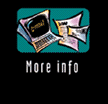
Receive a free subscription to this quarterly e-mail newsletter




Anyone who has tried to get an article or story published knows it isn't all that easy. The editors of respected, industry-leading magazines (that is to say, exactly the kind of journal you want your story to appear in) are usually somewhere between inundated and overwhelmed by the number of submissions they receive. They're stressed. They're busy. They don't have time (and frequently don't have patience) to deal with anything less than complete professionalism on your part.
What works is to make all your transactions with editors as smooth and effortless for them as you possible can. This starts with basic things like knowing the publication and its editorial needs, and submitting well-written, accurate work on time and in an appropriate format and style.
Nowadays, however, that's not enough. There was a time when virtually every submission arrived on the editor's desk via the U.S. Mail. Queries (or "pitches" in PR terms) on the suitability of an article for publication might be handled on the phone, but basically there were the only two ways to reach an editor short of showing up at his office. Today editors routinely have articles faxed, emailed and overnighted to them, and knowing which of the several paths to his or her desk an editor might prefer can be the difference between your article being published and being round-filed.
Some publication database services now offer editor preference information. As part of their listing for each publication, they include how an editor prefers to be contacted with a query as well as how they like to receive submissions. One editor, for example, may practically live on-line and prefer all communications via email; another may prefer inquiry via fax and submission on a floppy disk; a third may prefer phone queries and mailed submissions.
Although these online and published databases are a great source of information, they can be expensive for a small or vertical PR effort. In these cases, here's the technique Ripley-Woodbury uses to get off on the right foot with editors. To our article or query we attach a form like the one shown here that can be quickly completed and faxed back. On it, we reference the name of the specific magazine and ask them to indicate their interest in the particular story as well as how they would like to be contacted in the future. Editors like that we ask, and respond in impressive numbers.
Whether you establish editor preferences on your own or use one of the published services, contacting editors the right way (the way they prefer) is a step worth taking to get off on the right foot.
Marketing Strategy | Advertising | Public Relations | Web Development
1124 Main Street, Ste. B, Irvine, CA 92614
ph: (949) 251-0704 | fax: (949) 251-0806 | www.rwmarketing.com
Ripley-Woodbury Info
8:30 a.m. - 5 p.m., Monday - Friday, Pacific Time
© 1997 by Ripley-Woodbury Marketing Communications, all rights reserved.